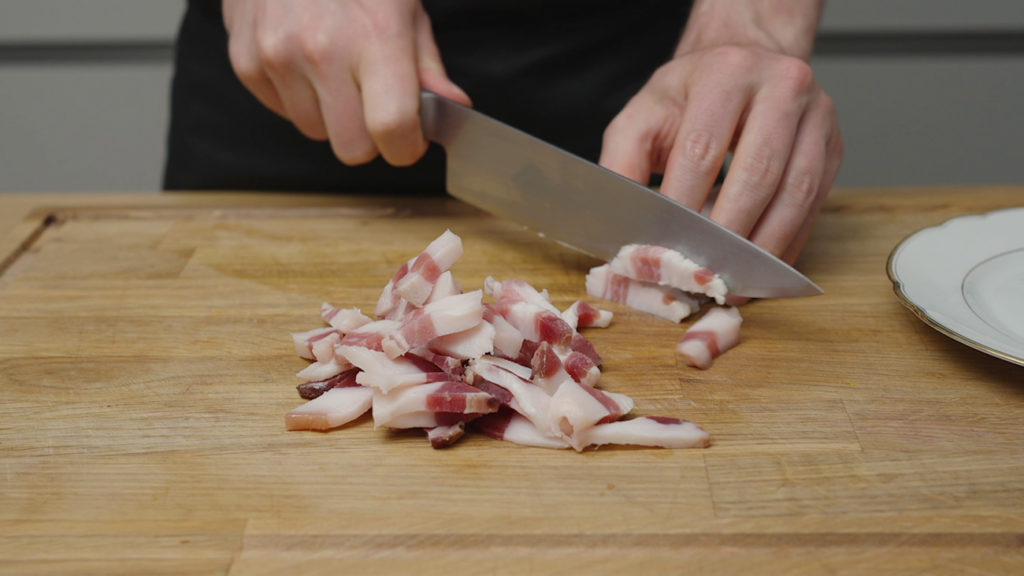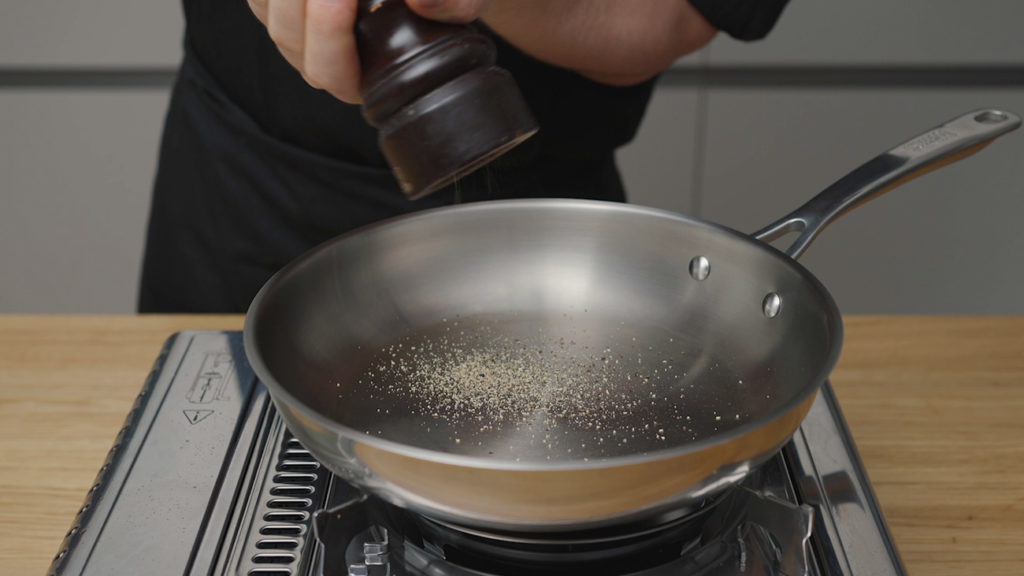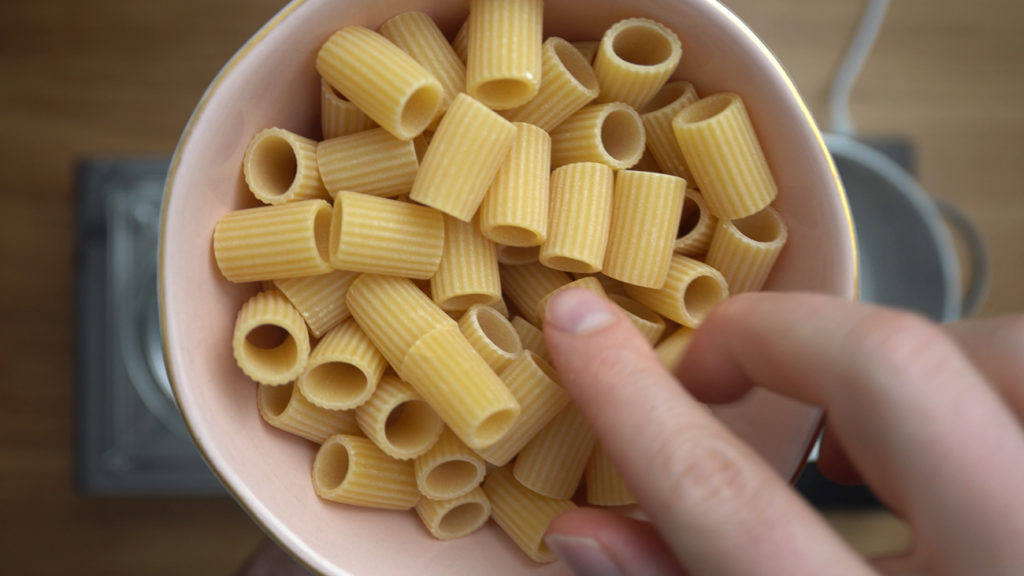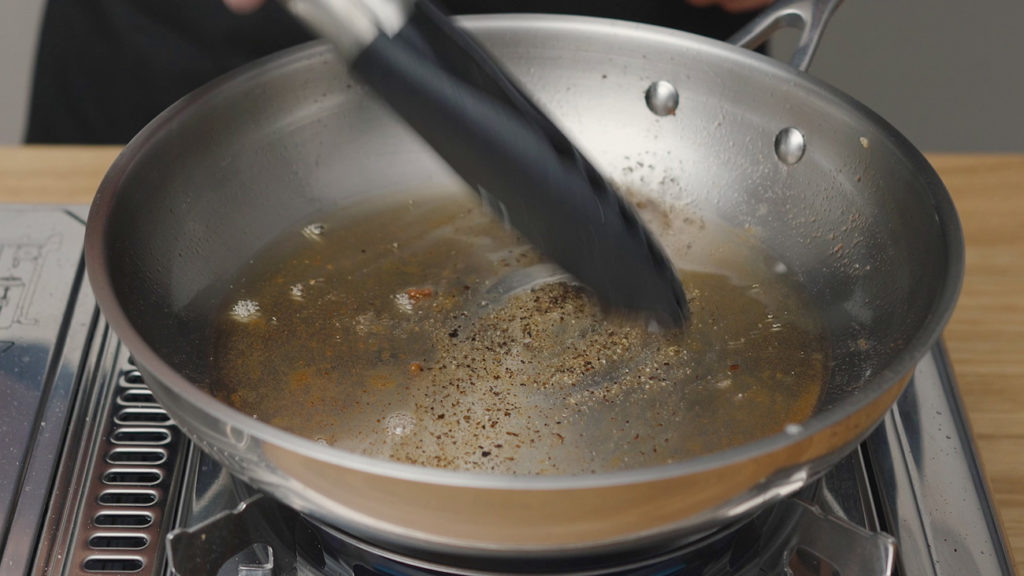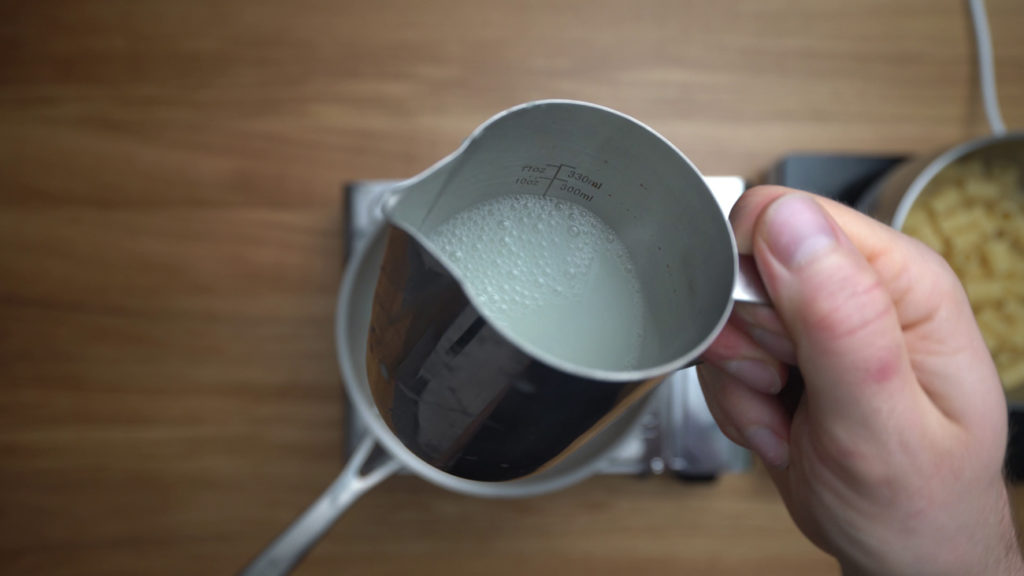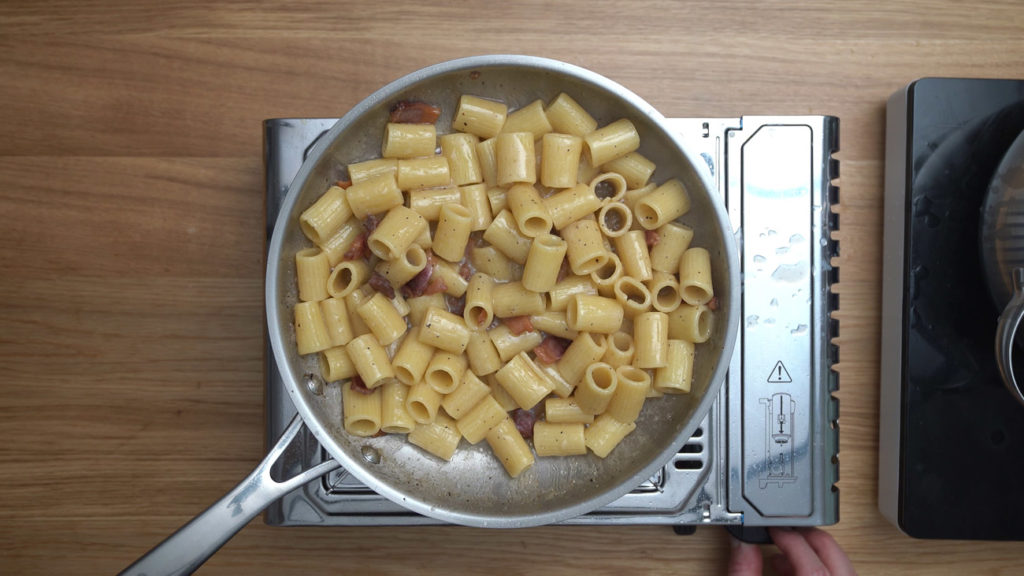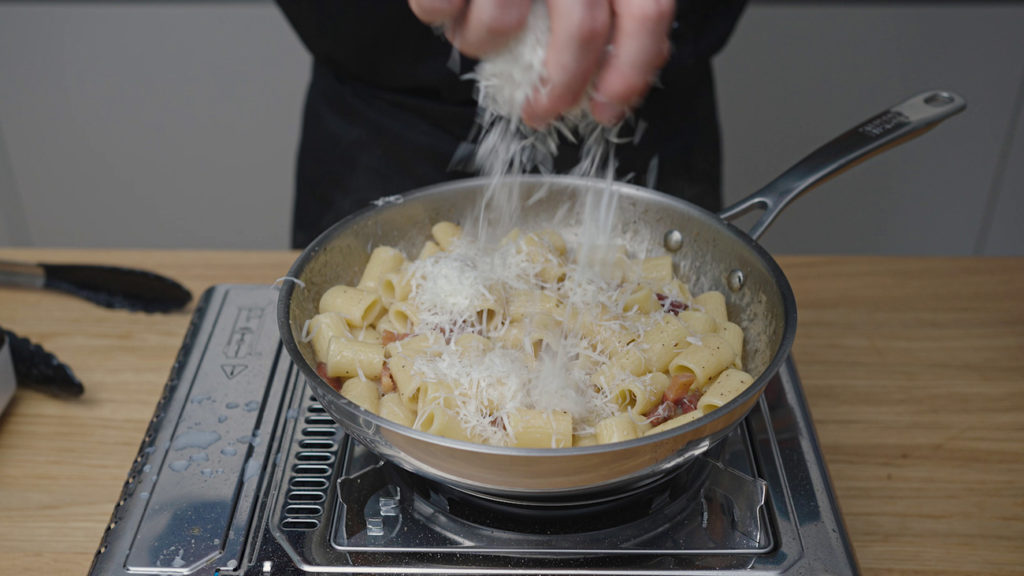Pasta alla Gricia is the oldest of the four Roman pasta dishes. It has a beautiful emulsified sauce made from guanciale and pecorino romano. This Roman Pasta dish represents in a beautiful way the elegance and simplicity of Italian cuisine. There are just 3 quality ingredients next to the pasta itself that turn Pasta alla Gricia into an aromatic poem of a pasta dish. Despite its simplicity, these ingredients come together to create a dish bursting with flavor. The combination of flavors is incredibly satisfying.
Another great thing is, that Pasta alla Gricia is a dish that can be prepared in a short amount of time. This makes this classic Roman pasta perfect for a weeknight meal or when you want a quick but delicious dish. It’s a convenient option for those who want a satisfying meal without spending hours in the kitchen.
Whether you’re a pasta lover or simply someone who enjoys trying new dishes and international flavors, Pasta alla Gricia is definitely worth trying!
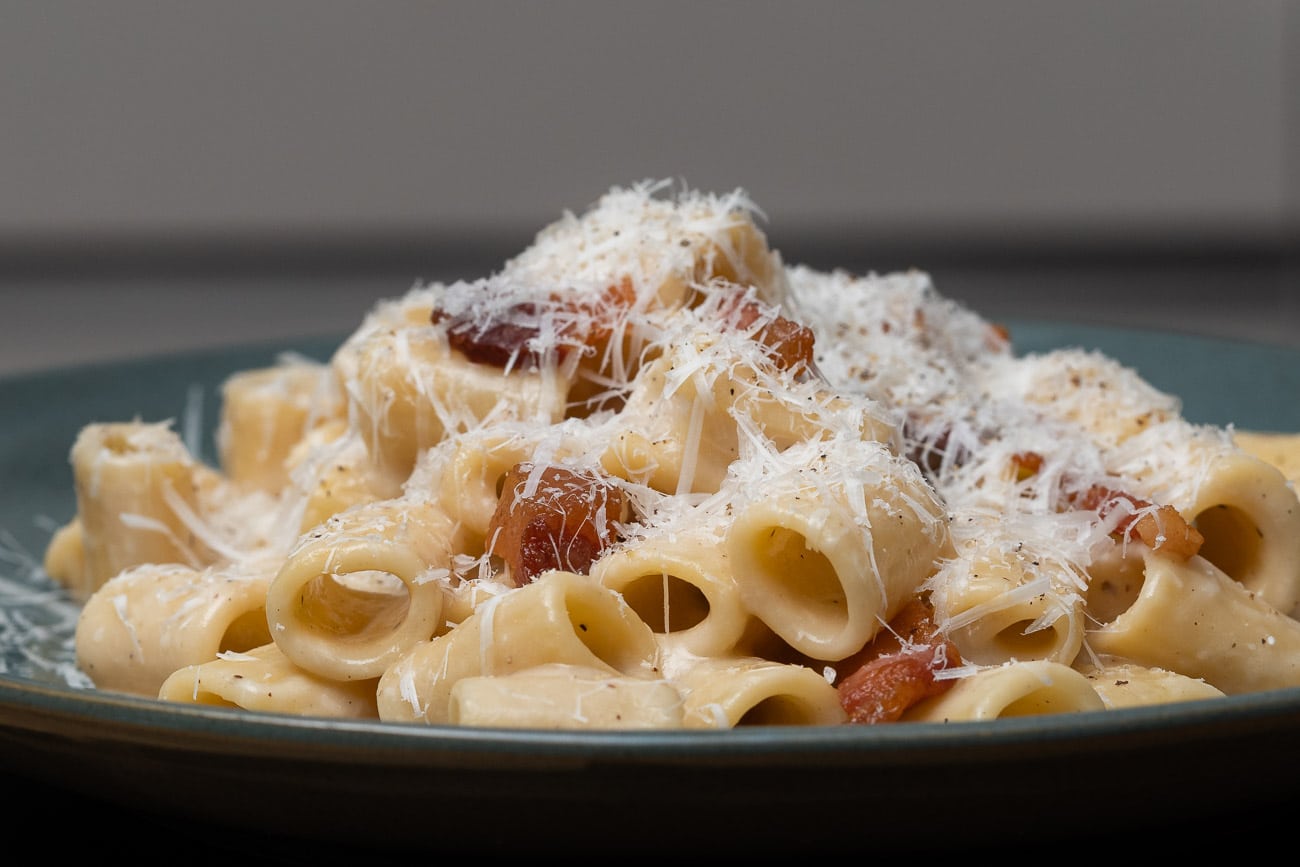
The four classic Roman Pastas
There are four classic Roman Pastas that all share the same minimalistic concept, most of them including the salty and tangy pecorino romano cheese and the richness of cured pork jowls called Guanciale. I have summarized this briefly below.
- Pasta alla Gricia
The Pasta we’re covering in this recipe is similarly called the ancestor and also the oldest of the four classic Roman Pastas. - Cacio e Pepe
If you leave the Guanciale and go more towards the cheese and pepper, you’ll end up with Cacio e Pepe (translated to “cheese and pepper”). This makes Cacio e Pepe a great dish for all vegetarians who want to try the taste of Rome’s classic pasta dishes. - Carbonara
This is the best-known of the four Roman pasta dishes. If you take Pasta alla Gricia and add eggs as well, you’re making a Carbonara. This is also the richest of these four pasta dishes and the combination of guanciale, eggs, and cheese creates a rich and indulgent flavor. - Amatriciana
Pasta Amatriciana originated in the Lazian town of Amatrice in the late eighteenth century. If you take the Pasta alla Gricia recipe as a base and add tomatoes (and sometimes garlic, onions, or chili flakes), you end up making pasta amatriciana. This is another super delicious roman pasta, especially if you like the addition of acidity and fruitiness of the tomatoes.
If you like to know more about the history and origins of these classic Roman pastas you’ll find some detailed information on this Website.
Ingredients for an authentic Pasta alla Gricia
As you might know from previous blog posts and recipes, I’m a big fan of recipes where only a few ingredients are needed. And where every ingredient has a place to unfold. However, this also means that the individual ingredients have a higher priority. This is also why it is important to use great, or better yet, the best quality ingredients you can get.
For example, let’s say you use a cheap pre-grated parmesan cheese together with pancetta as these were the only ingredients you could find. Then the recipe and the pasta will turn out completely different and you’re not making a pasta alla Gricia anymore. That doesn’t mean that you won’t get a very tasty pasta dish with these ingredients for sure. Down below you’ll show you which four ingredients you need for this classic Roman pasta dish.asta, usually, Rigatoni or Spaghetti is used for this recipe. However, you can use any pasta shape of your liking. It is rather important to use quality and rather starchier pasta. You can recognize the pasta by its coarse, matt outside texture. This will leave us with starchier pasta water which is needed for the sauce.
- Guanciale
Guanciale is Italian cured pork (pork cheek or jowl) and is a more tender and fattier cut compared to pancetta. Guanciale has a richer, punchier, and more pronounced pork flavor. This puts Guanciale more in the scene, especially in a recipe with just a few ingredients like this. If you can’t find Guanciale, then you can use Pancetta as well. It won’t be traditional/authentic anymore, but you will come pretty close in terms of flavors and still get a super good-tasting pasta. - Pecorino Romano
This Italian cheese made from sheep’s milk is the second key ingredient next to the Guanciale. This tasty cheese adds a tangy and salty note to the pasta alla gricia recipe. Pecorino Romano is one of Italy’s oldest cheeses, originated in Lazio, and is now protected and recognized by the European Community. You can identify both the Guanciale so as the Pecorino Romano on the yellow badge (see image above) or the words “DOP”. This stands for (Protected designation of origin) and ensures that the product is produced and packaged in a designated region. - Black Pepper
The Pepper enhances the flavors of the dish and adds a distinctly aromatic and spicy note to the dish. The heat from the pepper perfectly balances the richness of the pork and the saltiness of the Pecorino Romano cheese. You can pre-toast the Pepper, as common with spices, to better get the aromas and floral notes out of the pepper.
How to make Pasta alla Gricia
You’ll find the full cooking instructions with pictures so as a step-by-step Video in the Recipe below. That being said, these are a few key points for a successful Pasta alla Gricia Recipe made at home:
- Frying the Guanciale
To slowly render out the fat of the Guanciale, put the pork stripes in a pan and start with low to medium heat. Keep frying at medium heat and take the Guanciale out before turning too crispy. By putting the stripes onto some kitchen paper, you ensure that the guanciale keeps staying crispy and isn’t soaking in its own fat. - Cooking the Pasta
Be sure to cook the pasta in not too much water. This will result in a starchier pasta water that you’ll need for a good emulsion and thus a creamy sauce. Also, just cook the pasta 1-2 less than the suggested cooking time on the packaging. The pasta will finish cooking later in the sauce for a few minutes. - The emulsion
When adding the pasta to the fat in the pan, equally add some of the starchy pasta water and keep mixing together. Keep adding pasta water until you’ve and emulsion of fat and pasta water. - Adding the Pecorino
It is beneficial to grate the cheese as thin and fine as possible. This helps, together with additional pasta water, to mix together into a creamy sauce without having chunks of cheese in the sauce. There is also another approach by previously mixing the grated cheese with pasta water and blend to a cheese cream. This cream will be added at the end and dissolved with extra pasta water to a creamy sauce.
Watch how to make Pasta alla Gricia
Here are some more Italian and other Recipes you might like!
- One of the most aromatic Pasta dishes ever: Pasta Puttanesca
- How to make the best Focaccia bread at home: Focaccia with Poolish pre-ferment
- Enough Italian food for the moment? Try this: Authentic Sichuan Mapo Tofu Recipe
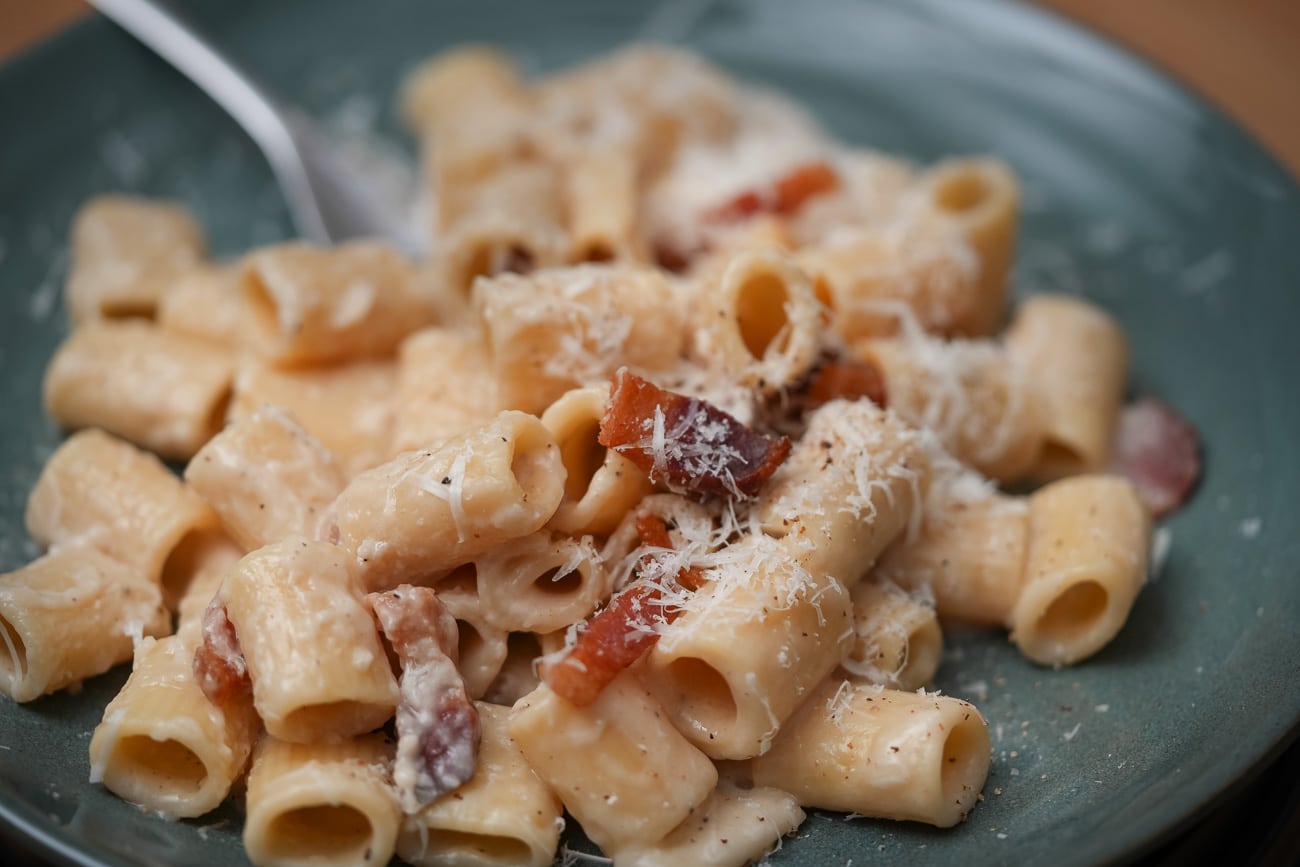
Pasta alla Gricia Recipe
Equipment
- 1 microplane grater
Ingredients
- 200 grams Rigatoni or other quality pasta
- 50 grams Pecorino Romano
- 150 grams Guanciale
- 2 tsp black pepper
- 1.5 liters water
Instructions
Preparing the Ingredients
- cut the guanciale into about 1cm thick slices and then cut the slices into stripes.150 grams Guanciale
- use a microplane or another grater and finely grate the pecorino romano. The finer the pecorino is grated, the easier it will dessolve into the sauce later.50 grams Pecorino Romano
- grind the black pepper into a medium frying pan and toast the pepper at medium-low heat until you can smell the floral fragrances from the pepper. Always keep the pepper moving and tossing in the pan so it won't burn.2 tsp black pepper
Cooking the pasta
- bring about 1.5 liters of water to boil. AdThen add 1tsp of salt. You don't need more salt here, as the guanciale and the pecorino romano are already quite salty.1.5 liters water
- add the pasta and cook about 1-2 minutes less than al dente or written on the packaging. The pasta will finish cooking in the sauce later.200 grams Rigatoni
- In the meantime, fry the guanciale in a medium frying pan at medium-low heat. The goal is to render out the fat and slowly frying the guanciale. Take the guanciale out of the fat before its turning too crispy and put it on some kitchen paper to drain off the excess fat. Keep the fat in the pan.
- Put the stove a low heat, put in the ground pepper and mix together.
- When the pasta is 1-2 minutes before being ready, keep some pasta water and put aside or keep the water in the pot. Put the pasta into the frying pan and mix together with the fat. Keep adding some starchy pasta water until you've a creamy emulsion.
- Put the guanciale back in and mix together. Keep some for decoration as well.
- turn of the stove and keep the pasta rest for about 30-60 seconds until there is no more sizzling.
- add half of the pecorino romano and mix together with additional pasta water until you've a creamy sauce. Add the second half and repeat. The sauce should be on the thinner side, as it will thicken again later after served.
- dish the pasta on the plates, top with the rest of the guanciale and finish with some extra grated pecorino on top. Enjoy!

